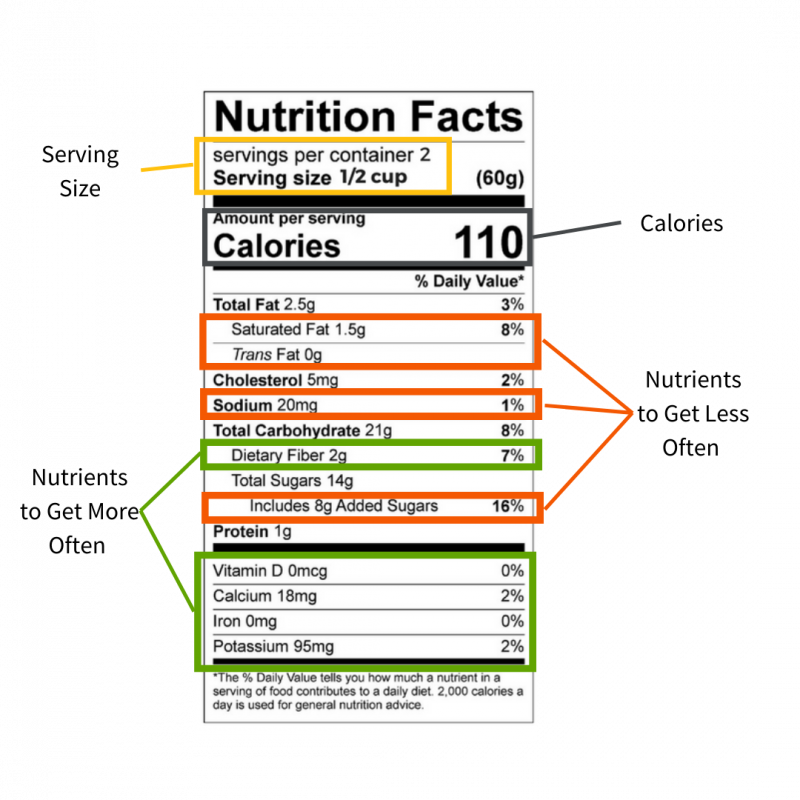what you need to know about Ultra-Processed Foods (Part 1): what are they & how much should you be eating?
what on earth are “ultra-processed” foods anyways?
While there are a number of different definitions, ultra-processed foods, or UPFs are commonly defined as ready-to-eat industrial products that are created from food-derived ingredients, combined with food additives to enhance flavor, texture, appearance, durability) via various industrial processes (and designed to maximize industry products), with minimal inclusion of whole foods.
The specific types of additives include flavor enhancers, colors, emulsifiers, thickeners, sweeteners, bulking, foaming, gelling and glazing agents among others.
Common examples of UPFs are fatty, sweet packaged snacks, carbonated soft drinks, ice creams and frozen desserts, general confectionaries, pre-prepared pasta, pizza, hamburgers, hot dogs, poultry and fish “nuggets”, ready-made meals among many others.
But…Aren’t These Foods Literally Everywhere!?
The unfortunate answer is , YES!
UPFs are highly prevalent in the modern global food supply, with greater prevalence in some countries and regions of the world than others.
Data analyses have shown a trend toward increasing consumption of UPFs in the global diet. Among high-income countries, total energy derived from UPFs comprising 42% of intake in Australia and 58% here in the United States. Contrastingly, in other high-income countries such as Italy and South Korea, the values are 10% and 25%. For countries considered low or middle income, like Columbia and Mexico, the range is between 16% to 30% respectively.
What are the nutritional consequence of significant, chronic consumption of UPF?
Next time you pick up a UPF at the grocery store take a moment to look at the nutrition label. What you will find is that UPF’s are often low in nutrients, low in fiber and packed with sodium, sugar, and calories. They also often contain a long list of ingredients, some that you probably have never heard of, or can't pronounce.
Sodium is commonly added to UPF products as a preservative. This allows an item to sit on the shelf for a long period of time, or also to add flavor to a food.
And here’s the thing, nutrient dense foods not only are important for your overall health, but from a fitness and body composition standpoint, they are foundational to the progress you want to see.
We won't go into too much detail here but adequate high-quality protein intake supports retaining muscle mass while losing body fat, and is central to the ability to build muscle if that’s your goal
Unsaturated particularly the Omega-3 rich fat sources provide critical building blocks for important compounds in the body and support an anti-inflammatory environment
Single-ingredient high-fiber “complex” carbohydrates provide fuel for all your body’s cells and support a steady level of glucose in the bloodstream rather than the massive fluctuations - peaks and drops that you see in response to UPFs high in processed sugars and fats.
we know they’re low in nutrients, so Why Do We Buy and Eat UPF?
There are many factors that influence which foods we choose to consume and to make matters more complex, these factors are often interrelated and themselves influence each other.
Studies have also attempted to identify socioeconomic factors influencing food choice decisions, with age, ethnicity, education levels, and income being among those identified.
At a basic level, UPFs provide benefits such as:
At a basic level, UPFs provide benefits as they tend to be:
Convenient to access - they’re everywhere
They tend to cost less - a serious consideration as global inflation as well as the distribution of wealth grows more extreme
The hyper-palatability” - the fact that many of these foods are literally chemically engineered to taste, and feel so good. They’re designed to stimulate the reward center of our brains to a greater degree than other, single-ingredient, minimally-processed or unprocessed food
These beneficial factors combine to make it unrealistic to avoid all UPFs but it is important to be aware of what they are and their impact on your health may influence you to make different choices when grocery shopping.
The Hawaiian Experience With UPF
If you live in Hawaii (or Jamaica, the Caribbean or almost any tropical island on Earth) these might sound really familiar (and be near and dear to your heart) : canned meats such as vienna sausages, spam, corn beef hash, and noodle-based items like samin/ramen, Golden Curry sauce mix, canned chili, hamburger or tuna helper, and canned “Hawaiian Sun” or “Aloha” drinks. The list could go on and on, but I’m sure at least a few of those touched a nerve!
We recognize that food is representative of so many facets of who we are as people (and as a people), and indeed many of these foods hold cultural significance. We’d like to recognize and honor their cultural value and therefore a part of your environmental and social health in ways that also provide space for recognizing physical health and striking an appropriate balance between the two.
This balance is likely quite unique for every individual. We don’t suggest complete elimination these foods unless that is something you actively choose to do, but rather a more moderate approach to reduced consumption, with options for modifications that will make them more nutritious.
Grocery Shopping Tips To Consider
If looking for convenient/shelf stable foods opt for frozen over canned foods, or select items like canned fish (salmon, tuna, sardines, etc), canned tomato sauce, and nut/peanut butter, oats
Stick to the outskirt/parameter of the grocery store as the middle aisle is usually where most UPF are stored.
If budget is an issue buy whole foods in bulk like frozen fish, veggies, and fruits. This will allow you to store them longer but without the added preservatives.
Try significantly reducing your intake of UPFs for a specified period of time. You’ll often see the cravings for these foods will decrease. When you do eat them again they won’t taste as good as you once thought.
In our next blog, we’ll be discussing the significant health concerns associated with chronic (over) consumption of UPFs. Ultra-processed foods are LITERALLY KILLING US!
Until then, and as always, we’d love to hear your thoughts!
What does your normal baseline nutrition look like?
Are there foods which you enjoy that fall into the UPF category that you want to continue to eat? Are there others that you want to eat less of?
Share your thoughts here, or go over to Instagram and send me and Chelyn a joint message (@jasoncarnegie_IF, and @chelynaboomboom). Let’s keep the conversation going!











